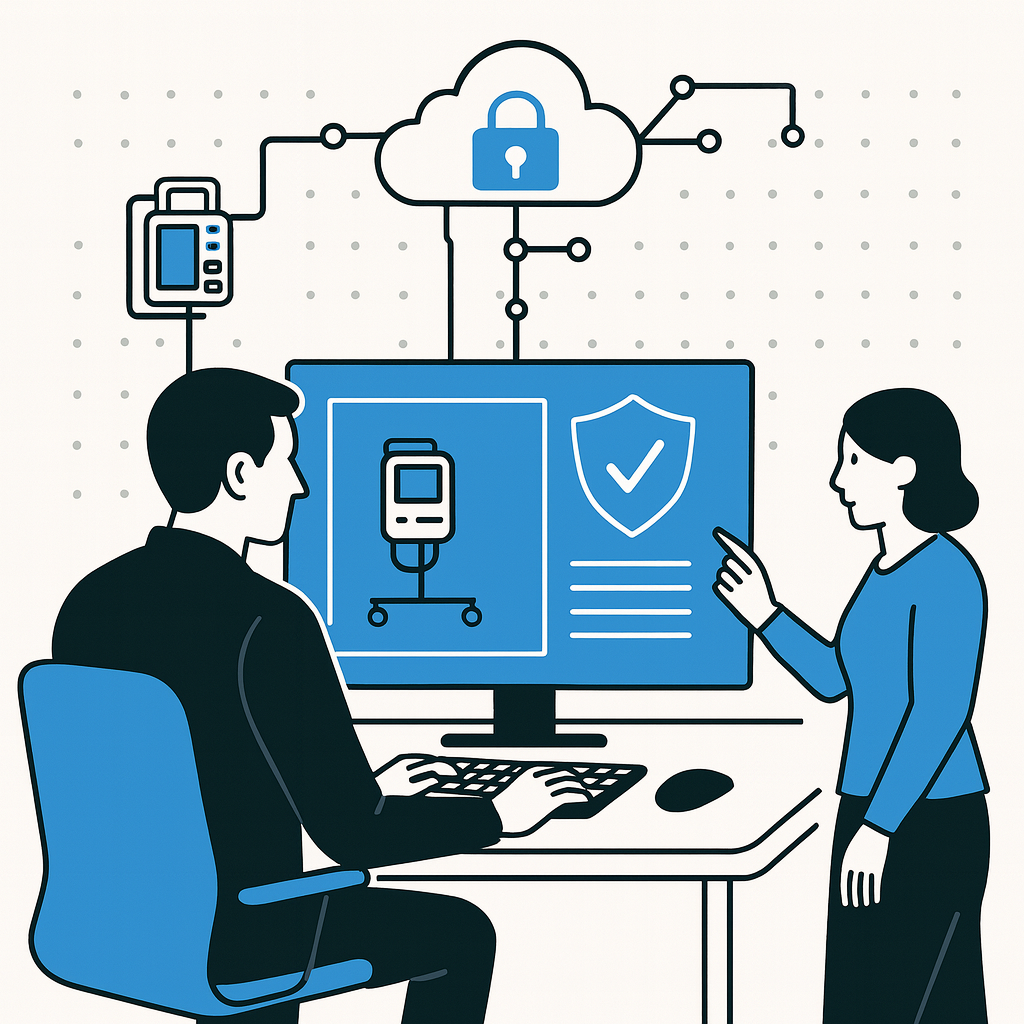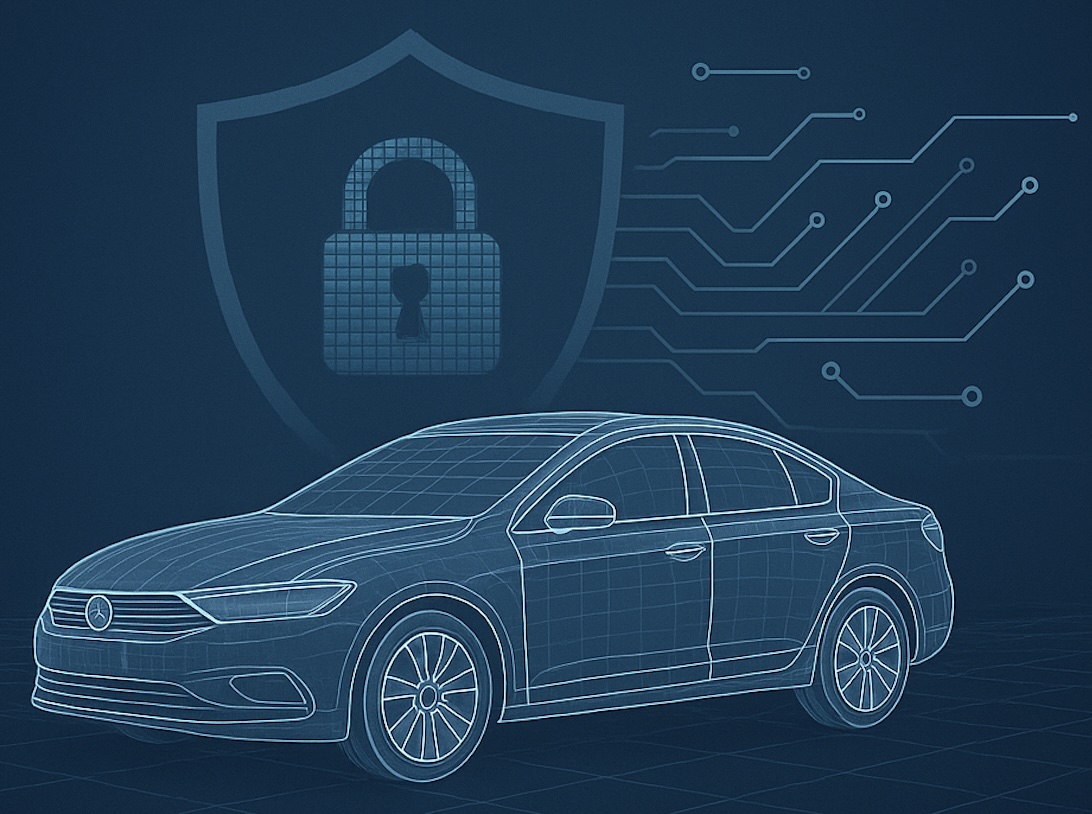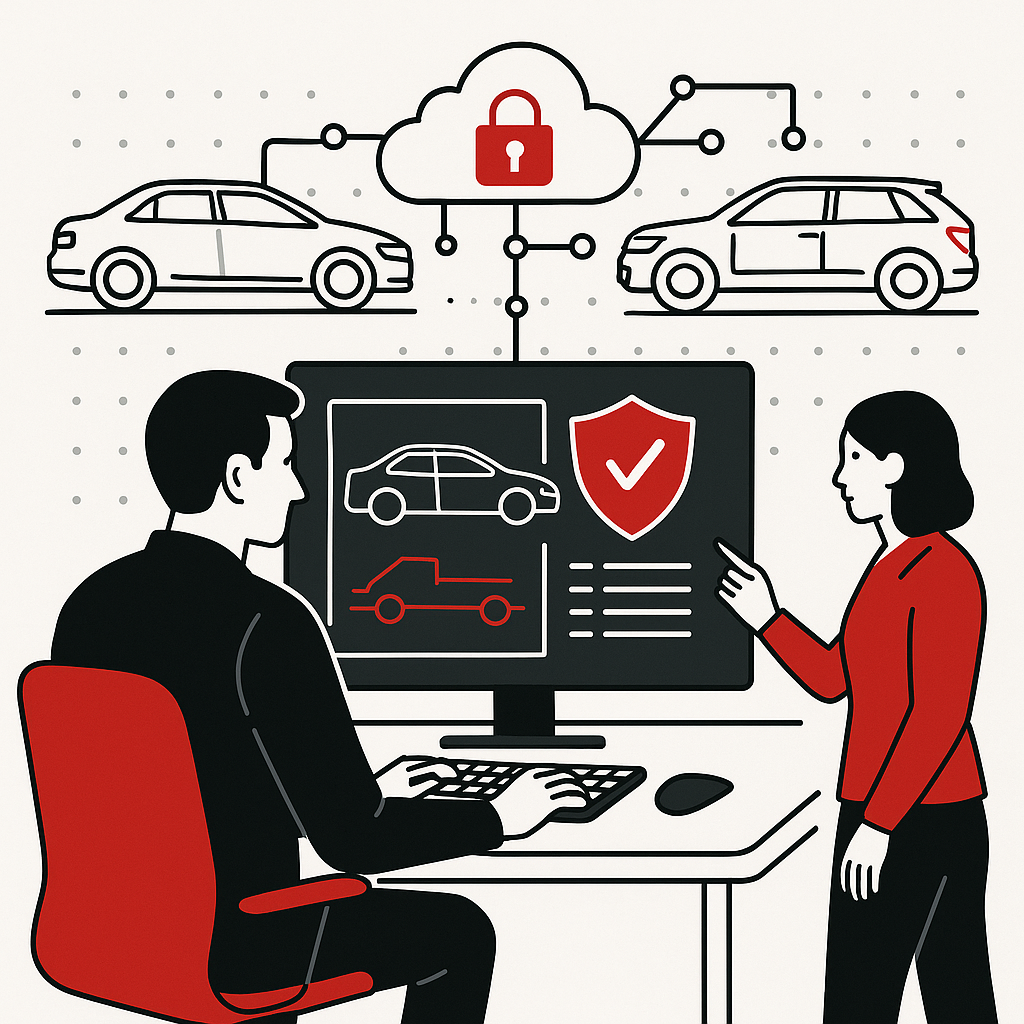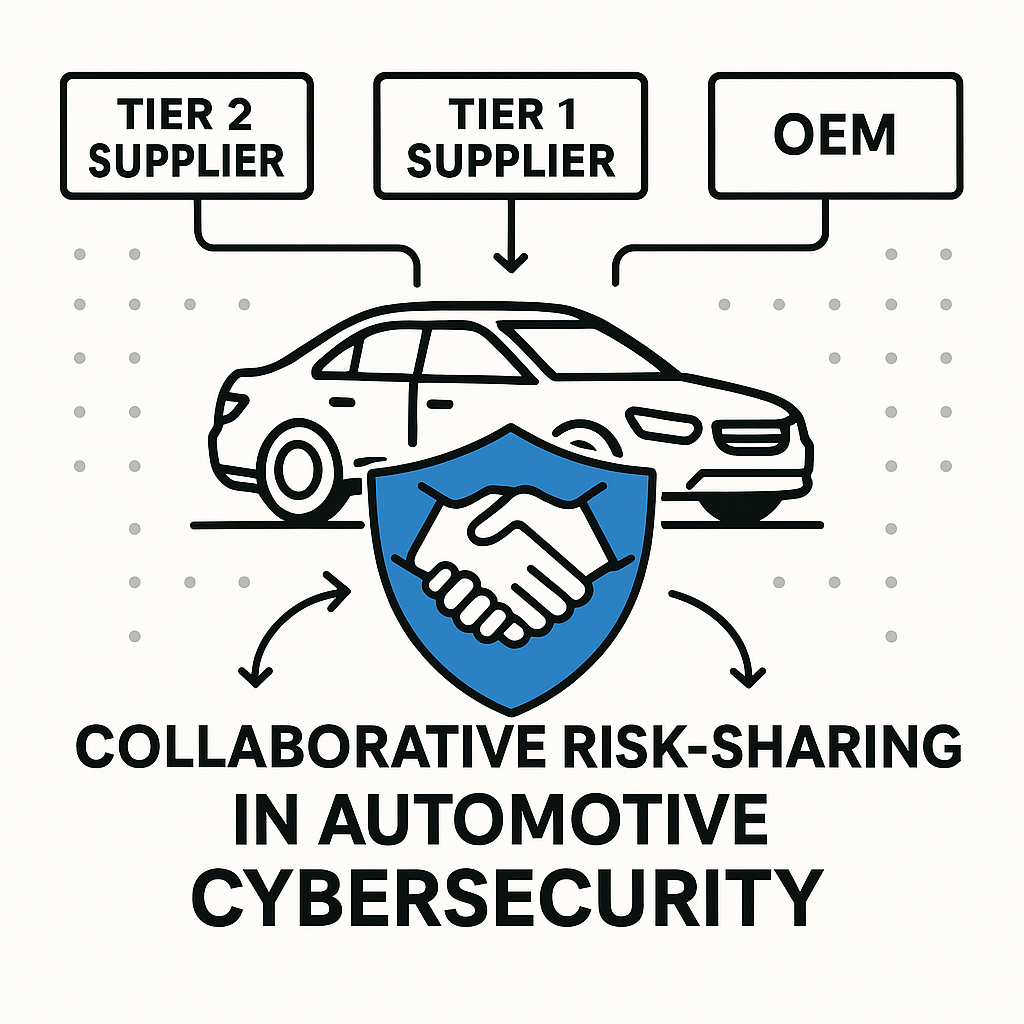.png)
Securing the Factory: Why TARA Matters in Industrial IoT
Introduction
Industrial IoT (IIoT) powers modern factories, plants, and smart grids by connecting machines, sensors, robots, and control systems. This connectivity brings speed, flexibility, and efficiency—but it also opens the door to cyber threats.
A single weak point can:
- Shut down production lines
- Damage critical equipment or raw materials
- Leak trade secrets or operational data
- Put worker safety at risk
That’s why cybersecurity in IIoT isn’t optional—it must be structured, proactive, and lifecycle-driven.
The IEC 62443 standard requires organizations to “assess and address cybersecurity risk” across systems and assets. But in practice, many OT teams still rely on informal checklists or isolated controls.
This is where TARA (Threat Analysis and Risk Assessment) comes in.
TARA gives you a repeatable, risk-based approach to spot vulnerabilities, prioritize what matters, and link real threats to real-world controls. It moves you beyond guesswork and toward a system that can defend itself—before attackers reach your shop floor.
Just like the automotive world uses structured cybersecurity (ISO/SAE 21434) to protect people on the move, the IIoT world needs the same discipline to keep factories in motion.
Now Let’s Look at IEC 62443
To apply cybersecurity effectively across industrial systems, we need a common framework. That’s exactly what IEC 62443 provides: a set of international standards built specifically for Industrial Automation and Control Systems (IACS).
It helps answer key questions like:
- What needs to be protected?
- What kinds of attacks are we defending against?
- How strong should the security be?
- Who’s responsible for what?
The standard is designed to cover four key layers of responsibility, ensuring that cybersecurity is addressed at every level—from organizational policy to system design to individual components:
- Part 1: General Concepts – Definitions, models, and terminology
- Part 2: Policies & Procedures – For asset owners and governance
- Part 3: System-Level Requirements – For integrators and risk assessors
- Part 4: Component-Level Requirements – For device and software suppliers
By aligning your cybersecurity approach with IEC 62443, and using TARA as your core method for assessing and addressing risks, you can ensure that each layer of your industrial environment is defended—intelligently and systematically.
Whether you’re an asset owner, system integrator, or component manufacturer, IEC 62443 gives you clear guidance on how to build and maintain secure, resilient systems.
And when combined with TARA, it becomes a powerful way to move from compliance to confidence.

Who Uses IEC 62443 – and How
Stakeholder
Relevant Parts of IEC 62443
Asset Owners
Part 1, Part 2 (Policies & Governance)
System Integrators
Part 1, Part 3 (System Requirements)
Component Manufacturers
Part 1, Part 4 (Component Requirements)
Assessors & Auditors
All Parts
What Are Security Levels (SLs)?
In IEC 62443, Security Levels (SL 0–4) are used to define how much protection a system or component needs against intentional cyber threats. The higher the level, the more robust the security.
Security Levels (SL 0–4): Matching Protections to Threats
SL
Attacker Type
Protection Goal
SL 0
No protection
None
SL 1
Casual or accidental
Prevent inadvertent misuse
SL 2
Low-skill, intentional
Prevent simple, intentional misuse
SL 3
Skilled attacker
Defend against targeted attacks
SL 4
State-sponsored / APT
Defend against advanced persistent threats
SL vs. CAL: Comparing with Automotive
While IEC 62443 and ISO/SAE 21434 serve different domains, they reflect a shared truth: cybersecurity isn’t just about controls—it’s about confidence.
Just as TARA helps both industries align risk with appropriate safeguards, these standards offer complementary ways to scale protection based on risk—one through technical strength (SL), the other through assurance rigor (CAL).
Aspect
IEC 62443 – Security Level (SL)
ISO/SAE 21434 – Cybersecurity Assurance Level (CAL)
Domain
IIoT / Operational Technology (OT)
Automotive Embedded Systems
Emphasis
Technical protection strength
Security-by-design assurance
Purpose
Resist attacker capabilities
Guide depth of development & validation
Levels
SL 0 – SL 4
CAL 1 – CAL 4
Example
Firewalls, MFA, encrypted comms
TARA
SLs define what security protections are implemented.
CALs define how well those protections were developed, tested, and managed.
So, if SLs help you build hardened systems, CALs help you build trustworthy systems.
Both are essential—especially as automotive and industrial domains continue to converge in smart mobility, connected fleets, and automated manufacturing. A modern TARA must be fluent in both.
How to Use SLs in Practice
IEC 62443 helps you:
- Assess the risk (via TARA or zone/conduit analysis)
- Assign a Security Level to each zone/conduit based on:
- Impact of a compromise
- Feasibility of an attack
- Exposure (external, internal, remote, physical)
- Select controls that meet the minimum requirements of that SL
Practical TARA Workflow for Industrial IoT -How Block Harbor Performs IEC 62443-Aligned TARA
Now that we’ve seen how IEC 62443 SLs compare with ISO/SAE 21434 CALs, the next step is making these concepts real. So how can we perform TARA in a way that directly supports IEC 62443?
At Block Harbor, we don’t just hand you a checklist—we walk your team through the full cybersecurity lifecycle using tooling, coaching, and system thinking. Let’s walk through a practical, structured workflow to assess risk, assign SLs, and select controls tailored to industrial environments.
1. Draw the Zone-and-Conduit Map
We begin by building a Zone-and-Conduit Diagram collaboratively with your OT and IT leads. This gives us:
- Clear visibility into trust boundaries
- A shared map to align SL assignments
- The foundation for layered security design
We use a guided workshop or your system diagrams to get this done in hours—not weeks.
- Zones: Logical/physical areas like:
- Zone 1: PLCs, Robots (Control Layer)
- Zone 2: SCADA, HMIs (Supervisory Layer)
- Zone 3: MES, Historian (Operations Layer)
- Zone 4: Cloud, VPN, Remote Maintenance (External Layer)
- Conduits: Interfaces between zones — wired/wireless networks, vendor tunnels, cloud links.

2. List Assets & Data Flows
Within each zone, we identify:
- Assets: PLCs, SCADA servers, HMIs, sensors, RTUs, switches, firewalls
- Data Flows: Commands, sensor readings, operational logs, firmware updates, historian data
Our template helps capture not just assets—but how they communicate, we ensure everything is linked to a zone, owner, and purpose—so downstream risk decisions make sense.
3. Brainstorm Threat Scenarios (STRIDE + ICS)
We facilitate threat modeling sessions using a curated STRIDE + ICS threat library. You won’t start from scratch.
✔️ You’ll get:
- ICS-specific threat examples (e.g., spoofed Modbus values, tampered ladder logic)
- Editable TARA templates
- Traceability to SL assignment logic
4. Feasibility Scoring – Guided by IEC 62443
Our worksheet includes dropdowns to rate:
Factor
Example
Elapsed Time
Time to breach: minutes, hours, or days
Expertise
Needed skills: general IT vs. ICS-specific
Window of Opportunity
Does the attack need timing (e.g., shift hours)?
Equipment
Tools: Laptop vs. JTAG interface, protocol fuzzers
Motivation
Is attacker casual, insider, or state-sponsored?
This helps your team quantify feasibility quickly and repeatably.
5. Score Impact
We evaluate consequences of each attack using these dimensions - You’ll get impact scores that support SL justification and align with compliance narratives.
Impact Area
Description
Safety
Could it harm workers, operators, or the public?
Environmental
Could it cause spills, emissions, or long-term ecological harm?
Financial
How much revenue would be lost? (e.g., downtime, rework, damage)
Reputational
Would this breach erode customer trust or brand equity?
Compliance/Legal
Does this violate standards (IEC 62443, NIST 800-82) or trigger legal penalties?
6. Risk Rating → SL Targeting → Control Selection
We calculate Risk = Feasibility × Impact to prioritize threats. Based on that:
- We help assign target SLs for each zone/conduit
- Pull from our control library to recommend SL 1–4 level protections
- Flag over- or under-secured zones (cost/benefit tradeoff)
Apply IEC 62443 Security Level (SL)-based Controls:
SL Level
Control Focus
SL 1
Basic protections: passwords, logging
SL 2
Role-based access, minimal segmentation
SL 3
Strong auth, encryption, anomaly detection
SL 4
Full isolation, secure boot, MFA, protocol hardening
7. Residual Risk Tracking – Built into Our Dashboards
After recommending mitigations:
- We help you track what’s still exposed
- Residual risk is tagged and versioned (e.g., new vendor integration)
- Can be exported for audit reports or customer inquiries
What Makes This BH-Grade?
- No theory-only output: we map risk to controls directly
- Co-designed with your team, not dumped on you
- Aligned to real deliverables: CSMS docs, procurement specs, audit readiness
Golden Rule : If it can stop production or hurt someone, TARA it.
Ready to Get Started?
We make it easy. You’ll get a complete TARA starter kit with step-by-step worksheets, an industrial threat library, and scoring guidance. Our hands-on workshops use your real systems—so your team gains practical experience, not just theory. All risks, controls, and residuals are tracked in a single dashboard for clear visibility. Plus, we support you long-term with audits, customer questionnaires, and incident reviews. Contact us today to streamline your IEC 62443-aligned TARA process and strengthen your industrial cybersecurity program.
Stay Connected with Block Harbor
Keep up with the latest in vehicle cybersecurity through our specialized newsletters. Choose the option that best fits your interests and role.
Thank you for your submission!
Read More
Explore more automotive cybersecurity insights from our experts. Discover best practices, case studies, and emerging trends to strengthen your organization's security posture.

A quick guide to using a structured Medical Device Cybersecurity Checklist for safer, compliant connected devices.

The state of automotive cybersecurity today and the forces that will define what comes next.

Announcement of Block Harbor’s selection for the Google AI Academy: American Infrastructure, highlighting our mission to secure AI-powered mobility systems like connected vehicles, drones, and robots through the VSEC cybersecurity platform.

Try Block Harbor Today
Start protecting your vehicles with the same platform the world’s best hackers and defenders use.


%201.svg)




